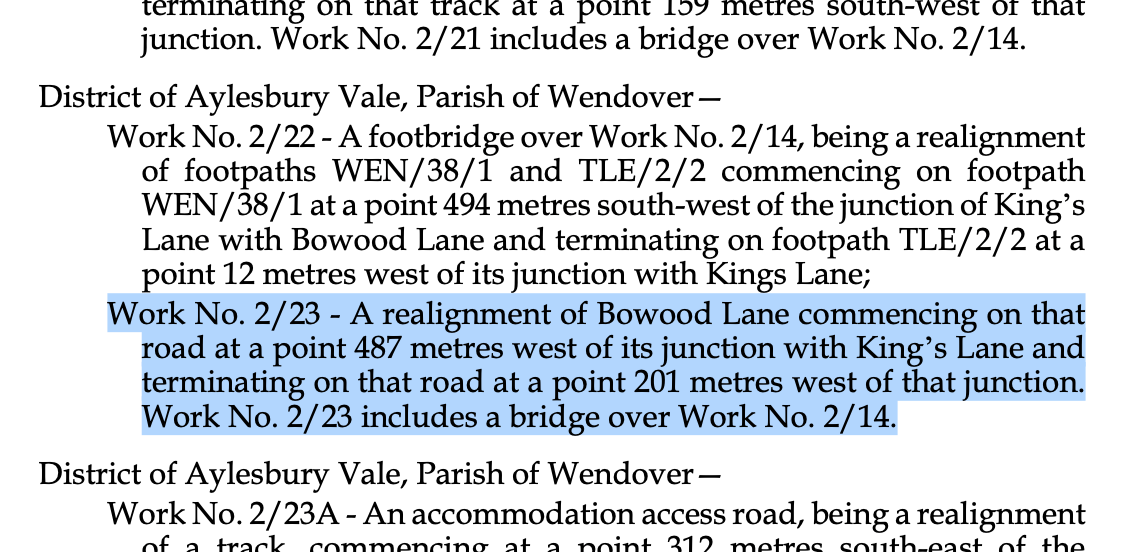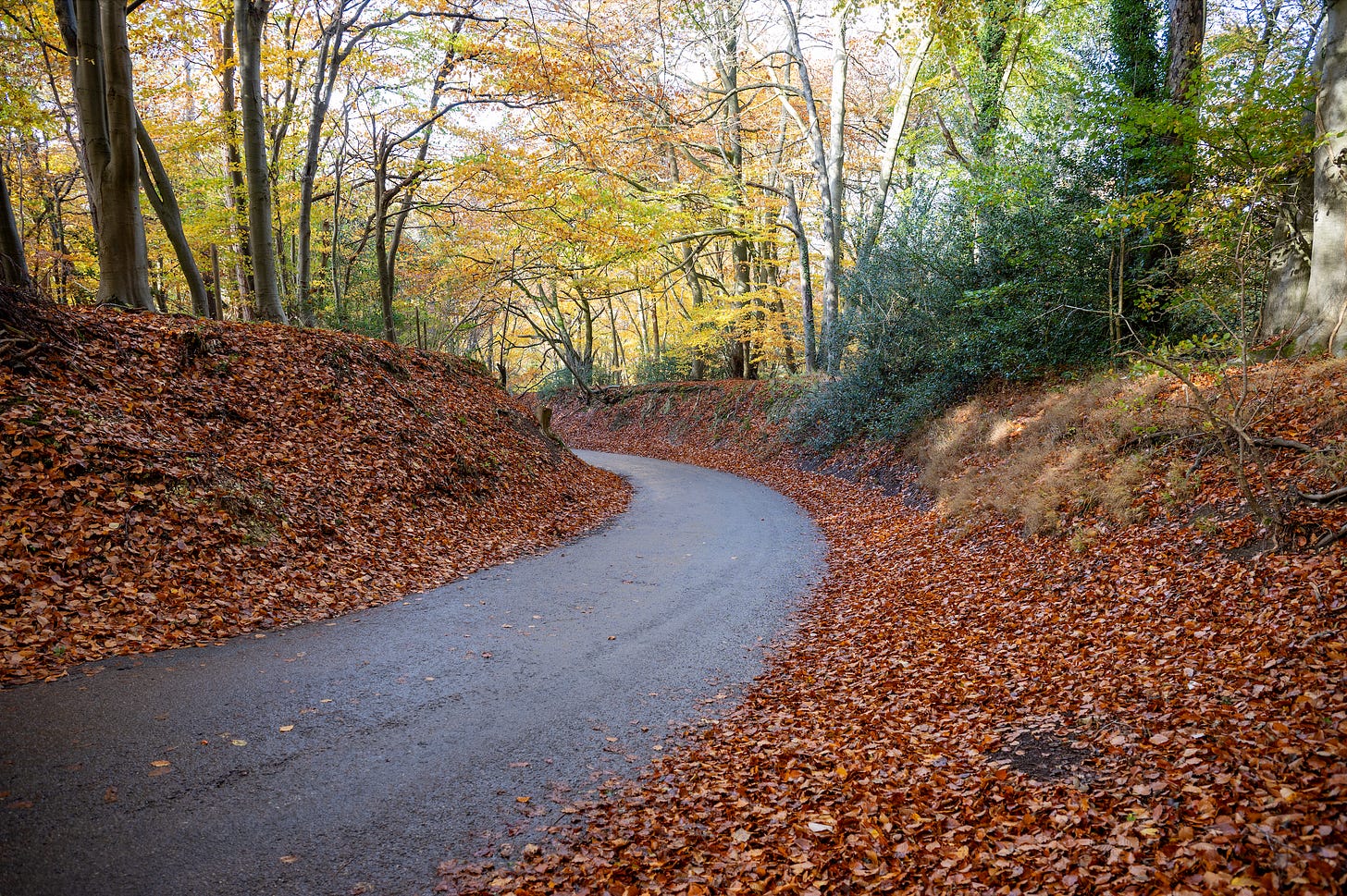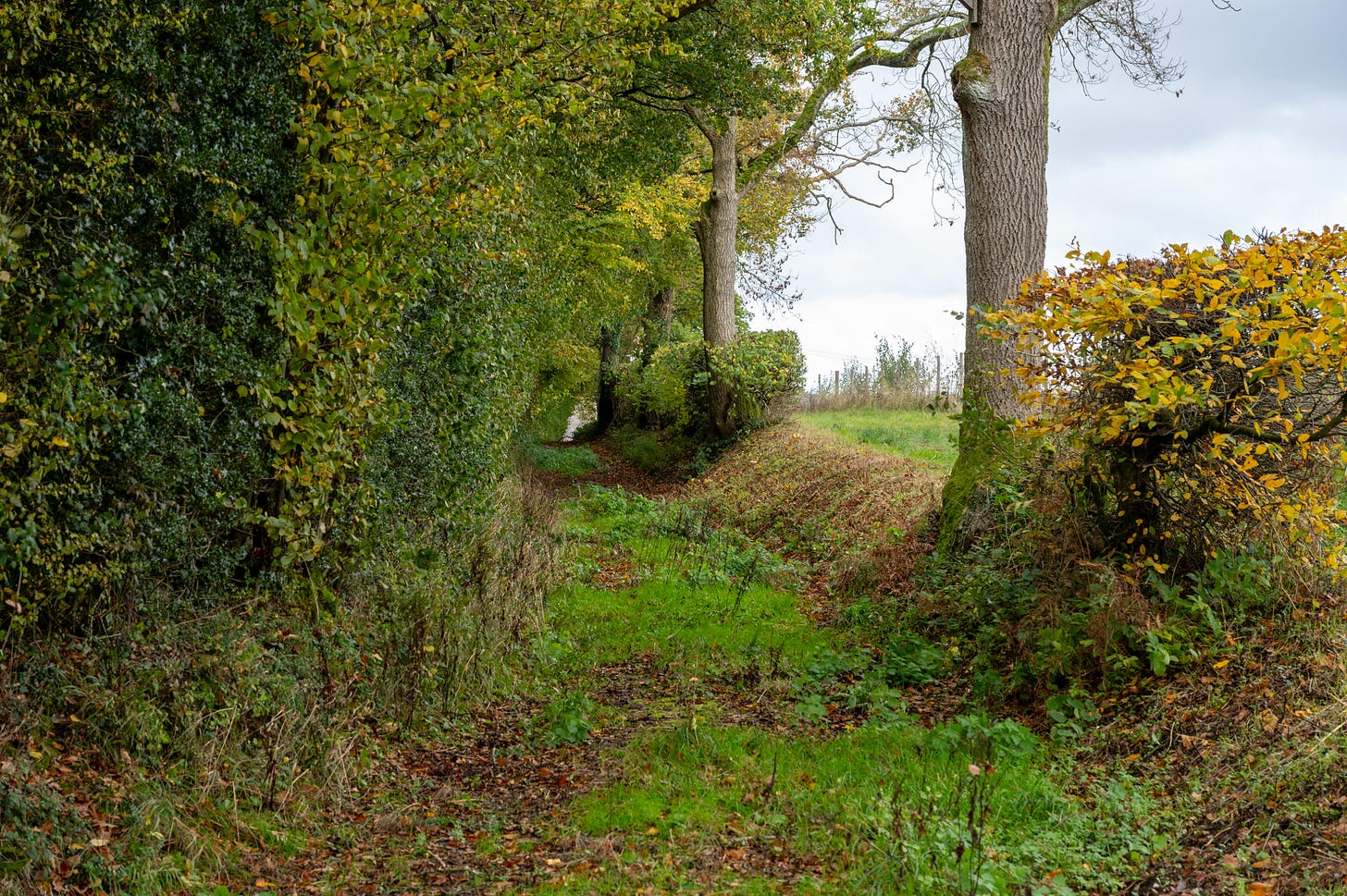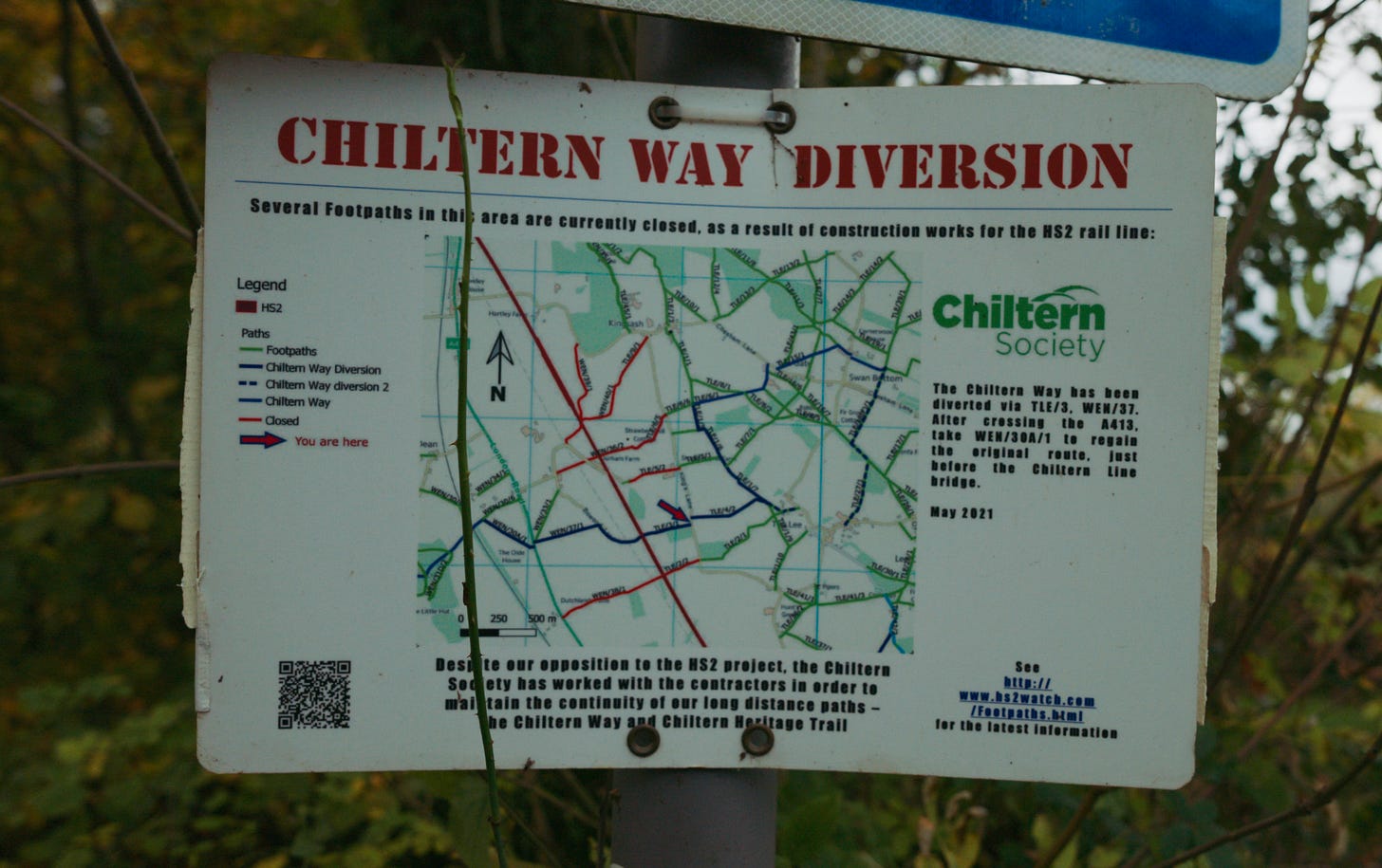How HS2 built a bridge to nowhere
A state-of-the-art road bridge has been built deep in the heart of rural Buckinghamshire. Designed to carry traffic over the HS2 railway, there's just one tiny problem - there's no actual road.
The bridge is designed to carry two lanes of traffic over what will become, one day, the HS2 railway line. Because it is part of HS2, it has to meet far higher standards than most ordinary road bridges. It is built to last for 120 years instead of the usual 75, and it must be able to withstand the impact from a derailing train moving at over three hundred kilometres per hour. Elaborate defences are being constructed to remove the possibility of any vehicle - even trucks or tractors - falling down into the railway cutting below. Spanning some seventy metres, supported on colossal steel and concrete piers sunk deep into the earth, in engineering terms it is one of the finest small road bridges in the country.
But you’ll never be able to drive on it. Because the bridge was built for a road that doesn’t actually exist.
When the HS2 hybrid bill finally worked its way through Parliament in 2017, it gave HS2 Ltd the authority to build, run and maintain phase 1 of the high speed railway line, the section between London and Birmingham. It provided a kind of planning permission for the line, and so it had to set out - in great detail - all the land that would need to be acquired, and all the highways, railways, waterways and other infrastructure that would have to be diverted or altered. To give you a sense of how much detail, the entire bill with its supporting documentation weighed roughly half a tonne.
The railway cuts across hundreds of existing roads, paths, and other bits of infrastructure; and the bill sets out - often to the metre - the exact nature of the bridge, underpass, culvert, viaduct, tunnel or whatever it is that HS2 Ltd has to build to deal with every single one. These are so-called scheduled works, HS2 Ltd has to build them, and they have to be built to the specifications laid out in the bill.
One of these these obstacles was Bowood Lane. Fans of maps can find it to the south east of Wendover, running east from the A413 toward King’s Lane. Fans of parliamentary documentation can find it on page 51 of the HS2 bill, which is surprisingly early, considering. The bill sets out that the lane will be realigned to meet a road bridge installed over the railway, which all seems very sensible.
HS2 infrastructure is not like normal infrastructure, because HS2 itself has been specified to meet the highest engineering standards. This means that whereas a normal bridge over a normal railway line would be built to last 75 years, the Bowood Lane bridge is expected to go on until the mid 22nd century. For fans of Star Trek, this means it should still be in use when Captain Jonathan Archer takes the helm of the USS Enterprise NX-01, Earth’s first warp 5 capable starship. It has to withstand the impact of a high speed train travelling at 200mph, and it has to ensure that no car, lorry or tractor can fall off of the bridge onto the track below.
The resulting structure is… not subtle. It is a a 70 metre long, monolithic slab of concrete and steel supported by giant piers driven deep into the earth. Its sides are protected by concrete parapets standing six feet tall, giving the impression of a box tunnel missing its roof from the road. It would not be out of place on the set of Star Wars, with storm-troopers waddling across it. It’s a testament to the skill of HS2’s architects and engineers that they’ve done a remarkable job blending it into the landscape, all things considered. From the ground, the gleaming concrete is so well finished it almost blends into the grey autumn sky. I actually think it’s quite a fetching bridge, but I appreciate I’m a deeply unusual person.
It’s fair that say that Buckinghamshire in general and Wendover - a sort of angry London commuter town cosplaying a Tudor village - in particular have not exactly welcomed the HS2 project with open arms; and local councillors’ reaction to a 70m concrete bridge being built in the heart of the Chilterns was pretty much what you’d expect. Thankfully, the HS2 bill essentially overrides local authorities when it comes to overall planning permission - the bridge has to be built, and the council have no direct power to stop it. What they do have is a say in the detail of what gets built - the cosmetic appearance for example. This is set out in Schedule 17 of the bill, and the various structures that follow this principle have come to be known as Schedule 17 works.
In theory, Schedule 17 was supposed to set up an expedited process that would ensure discussions between local authorities and HS2 happened swiftly and agreements could be reached. This general approach worked reasonably well for previous projects, like Crossrail or HS1, but something went seriously (and unexpectedly) wrong with HS2, with stubborn councils holding up work - often over extremely petty matters - and pushing dozens of cases to judicial review.
Why this happened is a whole other post. Some insiders I spoke to feel that the rise of social media played a part, giving residents more access to the planning system and allowing NIMBYs to organise and campaign more effectively. Others point to a weak and struggling Conservative government that was never likely to keep activist Tory councillors in check, especially given its own ambivalence toward the project.
Whatever the reason, Buckinghamshire Council (and several other authorities along the route) took on the role of HS2 blockers, fighting tooth and nail to slow progress with every tool at its disposal. The road bridge at Bowood Lane would become one front in that war, and this is where we need to talk about ‘holloways’.
Holloways are ancient roads or lanes that have sunk below the surrounding ground due to erosion over the centuries. You can find them all over the Chilterns: narrow, atmospheric roads with vertical banks of earth on either side, canopied by trees. Bowood Lane is such a lane, and the council decided that they wanted HS2 to make the bridge - the seventy metre reinforced concrete bridge with six foot parapets - look more like one.
As requests go, this was like asking someone to disguise an elephant as a shopping trolley. Almost every aspect of the bridge’s design is perfectly calibrated to meet the highest civil engineering and safety standards, as required by the HS2 project. You can’t just replace a concrete barrier with a decorative iron railing, or put some Victorian street lamps in for lighting, or plant trees on it. But the council were prepared to try.
First they demanded that the bridge should be reduced to a single lane. This was incompatible with design standards, which demanded space for two cars to pass each other. And so the compromise eventually reached was to build a two lane road, but paint a single lane down the middle of it with a wide tarmac verge on either side. The council insisted these verges should be grass, which would result in a massive concrete bridge with six-foot concrete walls on either side, a narrow single lane of tarmac, and two massive grass verges in between the walls and the road. This would have been impossible without making the bridge a lot wider, and so a miserable compromise was reached, resulting in two sad strips of turf that will soon be full of weeds.
The dispute between HS2 and Buckinghamshire Council eventually reached the Department of Transport, resulting in a withering decision from an appointed planning inspector who explained (with what I have to assume is sarcasm) that: “Providing two, 2.5 metre wide verges planted with grass or a mixture of grass, wildflower grassland and/or scattered low density woody species, with a 3.5 metre wide carriageway between them, in my view would not mimic a sense of being within a hedge-lined Holloway.” Indeed, the entire point of hollow ways is that they don’t have verges of any kind. They’d have been better off painting the walls brown.
In any case, the bridge is now built. It is no exaggeration to say that in terms of construction and engineering it is one of the finest examples of a rural road bridge over a railway line you can find anywhere in the country. You can even go and walk across it, if that’s the sort of thing you enjoy doing. What you can’t do is drive there the bridge. That’s partly because the bridge is closed to traffic while HS2 continue work on site; but it’s mostly - crucially - because there is no actual road to or from the bridge.
Because this is Bowood Lane:
…and this is the sign that greets you if you try to drive your motor vehicle into either end of Bowood Lane, which is part of the Chiltern Way long distance footpath:
That’s right - HS2 have been forced to build a two-lane, state-of-the-art, multi-million pound road bridge to join what is essentially an overgrown footpath to a sort of bridleway with delusions of grandeur. And the council’s principal objection, that it spent months fighting over, wasn’t that this was completely insane and should stop, but that the grass verge on the completely pointless bridge wasn’t quite wide enough to make concrete walls look like a hedgerow.
Cars aren’t technically banned, you could probably get a 4x4 up to bridge if you really wanted to and you didn’t care what it looked like afterwards, but Bowood Lane would barely qualify as a farm track. Vehicles used the lane in the past - surveys around the turn of the century counted a couple of dozen in each direction over the course of a day - but there are no houses, farms, buildings or really anything being served by the road, it was simply one of many cut throughs between a narrow country lane on one side and the A413 on the other. It serves no purpose, lacks even rudimentary tarmac, and it is unusable unless the council decide to build it again from scratch, which they are not going to do, not least because it would mean granting planning permission for something.
HS2 had little choice - once the act set out the work required they had no choice but to follow it - but the council could have acted. The sensible thing would have been to get the road redesignated as a bridleway or footpath, an idea that has some local support and seemed like the obvious solution to people I spoke to at HS2. This would have created a lovely, traffic-free public amenity for walkers or cyclists along a stretch of the Chiltern Way, and then the bridge could have been a simple footbridge instead. It wouldn’t have needed to be built to the same standards, it could be much smaller, more discrete, more attractively designed, and probably a fraction of the cost. Everyone would have been a winner - local residents, HS2, and the British taxpayer.
Why didn’t they? Only they know, but I suspect the answer lies in the small print of the signs at the end of the road, and what they say about the nature of opposition to HS2 in the ultra-NIMBY stronghold of Wendover, a parish prepared to bulldoze hundreds of yards of farmland if it means avoiding a single truck going down a residential trunk road each day. This is an area where the Chiltern Society felt obliged to clarify that they were not ‘collaborators’ when forced to temporarily divert their footpath for engineering works, presumably fearing they might be strung up in front of the artisan chocolaterie on Wendover High Street.
In this hostile environment, for councillors to be seen working with the enemy to actually achieve something of benefit to the community would be a political disaster. What would they say about us in the Facebook groups?! Far better to let this ludicrous bridge to nowhere go ahead, a grand monument to the singular insanity of British bureaucracy that will stand for generations to come. After all, it’s not our problem. We never wanted it anyway. It’s not our responsibility.
Check out the special video version of this post below, a pivot-to-video experiment I’m planning to follow up for other topics in the new year. We also have more discussion on this week’s Abundance Pod.










Such things make it impossible to disagree with Simon French in yesterday's Sunday Times that we need a "a culture shift by everyone from politicians and civil servants through to private citizens — all treating public funds like they would their own."
It's a simplistic argument, but clearly in this situation it is the opposite of what has happened.
This paints a beautiful vignette (well ugly perhaps) of a much larger societal problem we are facing: that nuance and compromise are seen as tacit support for the other, unthinkably evil, side. Great post, thanks